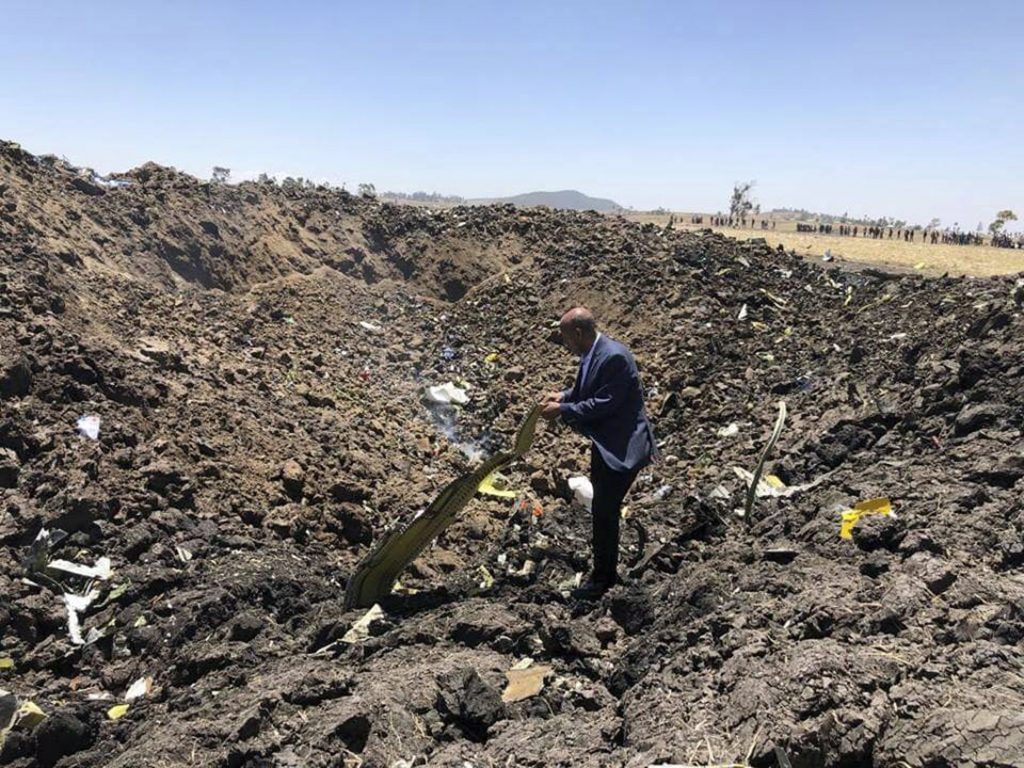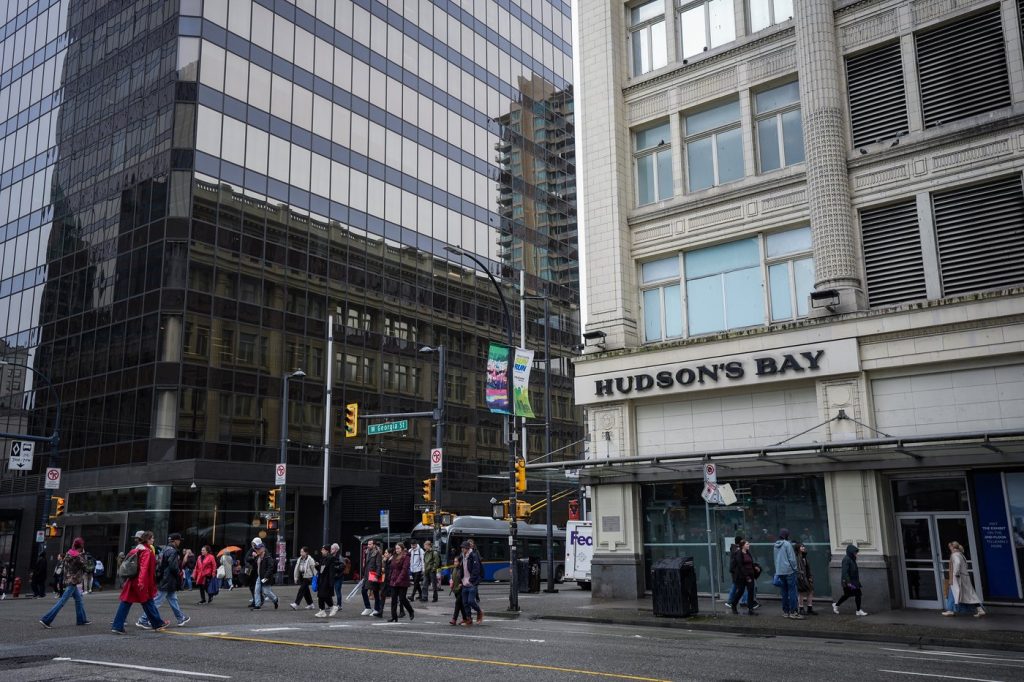Carleton professor, Edmonton mother and child among Canadians killed in Ethiopia plane crash
Posted March 10, 2019 7:00 am.
Last Updated March 10, 2019 11:28 pm.
This article is more than 5 years old.
A Carleton University professor was one of 18 Canadians killed Sunday in an Ethiopian Airlines crash that left 157 people dead.
Pius Adesanmi, a professor in the Department of English Language and Literature and the Institute of African Studies at Carleton University, was a “towering figure in African and post-colonial scholarship,” said Benoit-Antoine Bacon, the school’s president and vice-chancellor.
“The Carleton University community is in shock,” he said. “Our thoughts and prayers are with his family and all those who knew and loved him, and with everyone who suffered a loss in the tragic crash in Ethiopia.”
Pauline Rankin, dean of the Faculty of Arts and Social Sciences, said Adesanmi’s contributions to Carleton were “immeasurable.”
“He worked tirelessly to build the Institute of African Studies, to share his boundless passion for African literature and to connect with and support students,” she said in a statement. “He was a scholar and teacher of the highest calibre who leaves a deep imprint on Carleton.”
CityNews has also confirmed that Amina Ibrahim Odowaa, of Edmonton, and her five-year-old daughter Safiya were also on board the Ethiopian Airlines jet that went down Sunday morning.
An accountant with the City of Calgary, Derick Lwugi, was also among the victims, his wife confirmed.
Toronto woman Danielle Moore has been identified online and by several media outlets as one of the Canadians killed in the crash.
It was not clear what caused the Ethiopian Airlines plane to go down in clear weather six minutes after departing Bole Airport in Ethiopia’s capital Addis Ababa on its way to Nairobi, the capital of neighbouring Kenya. The accident was strikingly similar to last year’s crash of a Lion Air jet that plunged into the Java Sea, killing 189 people. Both crashes involved the Boeing 737 Max 8, and both happened minutes after the jets became airborne.
The Ethiopian pilot sent out a distress call and was given clearance to return to the airport in Addis Ababa, the airline’s CEO said.
Prime Minister Justin Trudeau called the news devastating and said his thoughts are with all the victims and everyone who lost friends, family or loved ones.
Canadian Foreign Affairs Minister Chrystia Freeland called the crash terrible news.
“My heartfelt condolences to all those who have lost loved ones,” she wrote on Twitter. “The Canadian government is in close contact with Ethiopian authorities to gather additional information as quickly as possible.”
Don Valley West MP Rob Oliphant tweeted earlier today that he landed safely in Addis Ababa, Ethiopia along with a delegation of six other MPs and Senators, but some of the people on his flight from Toronto may have connected to the flight to Nairobi that crashed.
He adds Canadian Embassy officials have been working on the crash all day.
Worried families gathered at the flight’s destination, the airport in Nairobi, the capital of neighbouring Kenya, and some relatives were frustrated by the lack of information about loved ones.
“Why are they taking us round and round. It is all over the news that the plane crashed,” said Edwin Ong’undi, who was waiting for his sister. “All we are asking for is information to know about their fate.”
The accident is likely to renew questions about the 737 Max, the newest version of Boeing’s popular single-aisle airliner.
Indonesian investigators have not determined a cause for the October crash in Indonesia, but days after the accident Boeing sent a notice to airlines that faulty information from a sensor could cause the plane to automatically point the nose down. The notice reminded pilots of the procedure for handling such a situation.
The Lion Air cockpit data recorder showed that the jet’s airspeed indicator had malfunctioned on its last four flights, though the airline initially said problems with the aircraft had been fixed before it left the Indonesian capital of Jakarta.
In Canada, 737 Max is used by two airlines – WestJet and Air Canada.
Safety experts cautioned against drawing too many comparisons between the two crashes until more is known about Sunday’s disaster.
The Ethiopian Airlines CEO “stated there were no defects prior to the flight, so it is hard to see any parallels with the Lion Air crash yet,” said Harro Ranter, founder of the Aviation Safety Network, which compiles information about accidents worldwide.
As sunset approached at the crash site, searchers and a bulldozer picked through the wreckage of the plane, which shattered into small pieces.
Photos from the scene showed multicoloured pieces of the jet strewn across freshly churned earth. Red Cross teams and others were searching a large area for human remains. In one photo, teams could be seen loading black plastic bags into trucks.
The airline published a photo showing its CEO standing in the wreckage.

The Ethiopian plane was new, having been delivered to the airline in November.
State-owned Ethiopian Airlines is widely considered the best-managed airline in Africa and calls itself Africa’s largest carrier. It has ambitions of becoming the gateway to the continent and is known as an early buyer of new aircraft.
“Ethiopian Airlines is one of the safest airlines in the world. At this stage we cannot rule out anything,” CEO Tewolde Gebremariam said.
Some of those aboard were thought to be travelling to a major United Nations environmental meeting scheduled to start Monday in Nairobi.
The plane crashed six minutes after departing, plowing into the ground at Hejere near Bishoftu, or Debre Zeit, some 50 kilometres (31 miles) south of Addis Ababa, at 8:44 a.m.
The jetliner showed unstable vertical speed after takeoff, air traffic monitor Flightradar 24 said in a Twitter post.
The Addis Ababa-Nairobi route links East Africa’s two largest economic powers and is popular with tourists making their way to safaris and other destinations. Sunburned travellers and tour groups crowd the Addis Ababa airport’s waiting areas, along with businessmen from China and elsewhere.
The jet’s last maintenance was on Feb. 4, and it had flown just 1,200 hours. The pilot was a senior aviator, joining the airline in 2010, the CEO said.
Boeing said a technical team was ready to provide assistance at the request of the U.S. National Transportation Safety Board.
The last deadly crash of an Ethiopian Airlines passenger flight was in 2010, when a plane went down minutes after takeoff from Beirut, killing all 90 people on board.
African air travel, long troubled and chaotic, has improved in recent years, with the International Air Transport Association in November noting “two years free of any fatalities on any aircraft type.”
Sunday’s crash comes as Ethiopia’s reformist prime minister, Abiy Ahmed, has vowed to open up the airline and other sectors to foreign investment in a major transformation of the state-centred economy.
Ethiopian Airlines’ expansion has included the recent opening of a route to Moscow and the inauguration in January of a new passenger terminal in Addis Ababa to triple capacity.
Speaking at the inauguration, the prime minister challenged the airline to build a new “Airport City” terminal in Bishoftu – where Sunday’s crash occurred.








